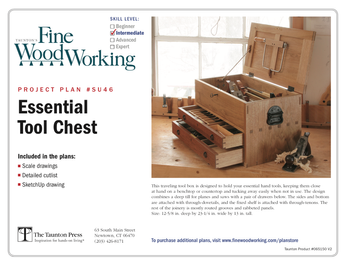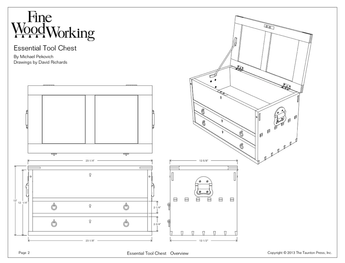I’m making a bookshelf – 2 long vertical sloping supports, about 3 inches wide to hold shelves that stick out in front of and behind the supports. There’s something similar sold at Crate and Barrell but it uses screws for the joinery . . . . .
I was dadoing the grooves for the shelves (across the grain of the support)and no matter what I tried, could not prevent chipout. I tried:
– cutting with very slow increments on the plunge router
– climb cutting into the 2 out of 4 edges where one would expect chipout
– repeated climb cutting, going deeper 1/16 at a time
– plunging the router while stationary right on the corner where the chipout occured
– taping up the edges with blue tape before routing
The router bit is a new grizzly – barely every used.
The only thing that would likely have worked is to clamp a sacrificial piece of wood on the exit – but because of all the clamps needed (I don’t have a good workbench) this was not really feasible.
Anything else I could have done to prevent the chipout without the sacrifical wood?
Thanks















Replies
Is the chip-out occurring at the ends of the dado or along the edges?
Sacrificial boards at the ends should solve that problem, and pre-cutting the surface edges with a marking knife should solve the other. Some folks also like to slightly moisten the surface of the area being cut.
Thanks for the response.Chipout is only at the end, and only on the 2 corners where chipout may be a problem; the other 2 corners are perfect. Long edges are fine.The other strange thing is that the dado side is not dead vertical - there's a step. I remember reading somewhere that the router bit is not necessarily in the center of the base plate, so I was being really careful not to rotate the router as I moved it. Any idea what's causing this? Fortunately the step is so small its not affecting the fit, but I'd like to at least understand what's causing it.Thanks
An out-of-round or non-centered base would cause a variation along the length of the dado, not a variation in the face. If you made multiple passes of increasing depth, however, you might get that result with a base issue. This is one reason that many like to cut the bulk of the material slightly inside the final cut line, and then clean up the edges with the bit at full depth. This assumes the use of edge guides for the router base, of course.
Like Ralph, I can't tell from your post whether the chip-out is only at the exit point, or allong the entire dado. For chip-out at the end, I can't think of any other way to prevent it than to have sacrificial stock -- perhaps with some more metal gear-grinding, you can figure out a way to do this.
As to chipout along the dado, scoring -- as Ralph mentioned -- should be a help. I have reservations about the Grizzly bit (and in general, I'm a Grizzly fan). I would lean more toward Whiteside, Freud, CMT, for the best results.
As the cutter enters & exits a x-grain cut it will break out the edge.
One side of the entry/exit is climb, the other is anticlimb. The climb entry side never breaks away, the anticlimb side always breaks.
Back up the anticlimb side only and the entry will be clean.
The exit has to be an "entry" to prevent breakout there. So you have to enter from both sides to minimize the break out.
You either have to remill or back up the stock to prevent the breaks.
The stepping is from technique. You're not controlling the router. And if you're using the subbase as a guide against a straight edge you have the worst guide config. there is.
A long templet (longer than the work is wide) will allow the router a straight line uninterrupted path that should prevent the steppng (provided this is a single diameter single depth cut). A collar guided or bearing guided tool is required for the templet.
Added benny's of the templet: The router is above the fray (no chips fouling the footway), easy direct measurement templet registration and perhaps more support for your router.
Nuthin's easy! (Routers)
Thanks for the reply.I'm using a jig similar to what's shown here:http://www.benchnotes.com/Router%20Dado%20Guide/router_dado_guide.htmOne difference is that there are quarter inch thick plywood "runners" on both side that the router slides on in addition to the boards which the base is pushed against. (This is a very common jig design - presumably you know what I'm referring to; the plywood runner's width is equal to the the router base radius less half the bit diameter so you just line the plywood edge against the line where you want the dado to begin.)If I'm understanding you correctly, it would be better not to use this type of jig, but instead put the straight edge right up against the line where the dado begins and cut using a pilot bit. Is that correct?I'm actually cutting a 1.75" dado, using a half inch bit - the shelves I'm installing have a lip along the edges which is why the dado is so wide. Cleaning out the waste has not been a problem - the only issue I've had is on the top L and bottom R corners of the dados and the small step as noted on my original post.
My suggestion is to have the router do its thing up on a templet above the work, not directly on the work.
In your case, with such a wide excavation, you need a window templet = 1.75" + 2x the offset in a collar cutter ensemble. I would not use a bearing guided cutter on this cut.
Against the cut line? No, its postion must be coincident with the edge of your dado + 1 collar cutter offset.
Again, the subbase, no matter if its trapped in a jig or not, is the lousiest of all router guide systems. Picture (
.http://patwarner.com/images/rat6.jpg)
shows 1/2 of what I'm talking about.
Edited 7/5/2009 4:50 pm ET by Routerman
Edited 7/5/2009 4:51 pm ET by Routerman
Thanks for the suggestions. I follow what you are saying and it makes sense. I'll give it a try next time. Mervyn
This forum post is now archived. Commenting has been disabled